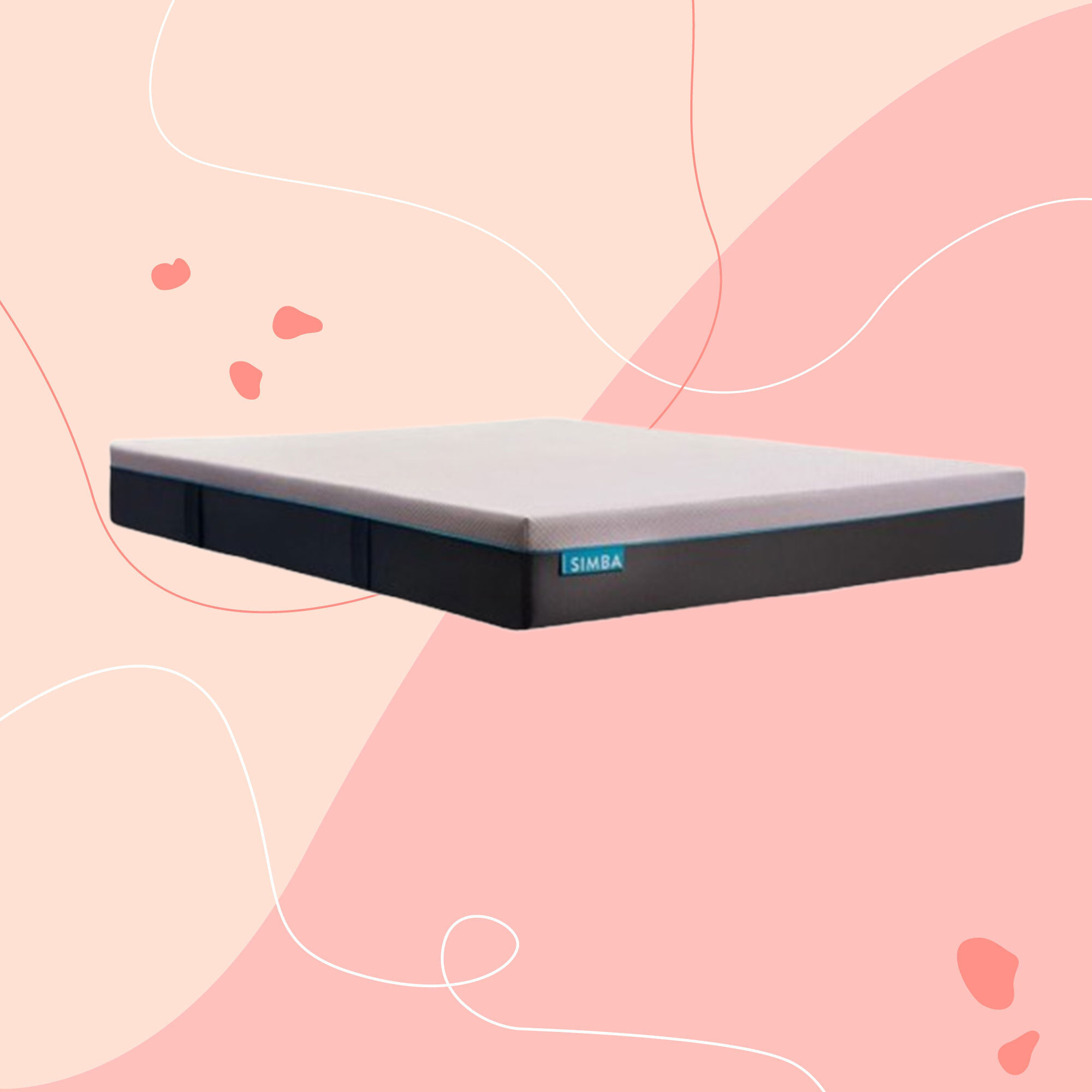
Around five years ago I began to suffer from hip and shoulder pain in bed. Already at that age when sleep begins to suffer, joint pain was not one of the symptoms I had bargained for, especially since the classic sprung mattress plus foam topper I'd been sleeping on for a good three or four years had been perfect for me, until suddenly it wasn't.
I'm a determined side sleeper, which meant that I was not only waking up every morning with pain and a stiff body, but that I also tossed and turned throughout the night to get comfortable. After months of physio, osteopathy, yoga and sleep deprivation, I decided not so much that my existing mattress was worn out and in need of replacement, more that it just no longer suited my body.
So, I took up the offer of a free trial on the Simba Hybrid Original, and I've never looked back. My physiotherapist even asked my friend, another of her clients, where I'd gone. 'She's got a new mattress, it's changed her life,' she told her. You can read our Simba Hybrid mattress review for more detailed information, but this is how I discovered it, why it suits me, and why it might work for you, too. Looking at you, ladies, but I'd say anyone with joint pain should try it.
Obviously, I moaned in the Ideal Home office about my poor sleep quality. And obviously I directed my complaints at the sleep expert on the team (sorry, Amy Lockwood).
At that time, we, as a team, were just starting on a round of mattress testing, including on hybrids. I didn't know a huge amount about hybrid mattresses at that point; they were fairly new to market and tended to be delivered in a box with a free trial. I was much more used to trying out a mattress in store before feeling safe enough to buy. A mattress is a big investment, right?
However, Amy said trying one might offer a solution to my joint pain, since they seemed to promise the kind of support with cushioning that I couldn't get from a sprung mattress and topper combination.

So, I opted into the Simba 200 day sleep trial, which allows you to try out your chosen mattress for long enough that you can really judge whether it works for you. Most mattress-in-a-box companies offer these trials, which are way more practical than lying on a mattress in a store with your clothes on for 10 minutes.
For years, when younger, I'd slept on a futon (hardcore), then swapped to a sprung mattress which, as I got into my 40s, began to feel a little unwelcoming. I added a topper (a John Lewis foam mattress topper like this one) and that worked really well for a few years. But it, and a new topper, didn't solve the joint pain problem, which was becoming chronic, and expensive to treat. So, I didn't hold out much hope for the Simba, if I'm honest.
However, as soon as I lay on it, on my back to start with, I noticed the difference in the support quality. Lying on my sprung mattress, I could feel the resistance of the mattress layer beneath the (fairly deep) topper. With the Simba Hybrid, I felt like I was floating on a cloud. However, unlike the older memory foam mattresses I'd tried in the past, there was no sinking, no moulding around my body. Just floating.

Night one: I slept on my side and woke up, for the first time in months, without hip and shoulder pain. And so it's continued. There's a reason the Simba Hybrid Original takes the number 1 spot in our best mattress buying guide, and for me, it's the comfort and support combination.
I have to add a couple of extra points: it is engineered for cooler sleeping, but for me, the mattress couldn't do that alone; so I swapped to a lighter, breathable duvet, too: the M&S Supremely Washable All-Seasons duvet, which features in our best duvets list as the top budget buy.
The Simba Hybrid has also got next-to-faultless motion transfer, which was a must for me. My nights were being further disturbed by a partner who came to bed later and got up earlier than I did, so I was being woken by the bounce of him getting up and down at both ends of the night. That ended with the Simba.
And finally, I invested in a new pillow to complement my new mattress. I already knew that if you shop a new mattress, you should buy a pillow that works with it to suit not just the mattress firmness but your sleep position, so it made sense to me to buy the Simba Hybrid Pillow, which features top of our list of best pillows and which is designed to work with the Simba Hybrid. You can adjust its depth to suit not just your sleep position but how deeply you sink into your mattress, which, of course, varies from person to person, depending on their weight and the firmness of their mattress. You can find out more in our Simba Hybrid Pillow review, which goes into all the science.
I've now had the Simba Hybrid for around five years; my joint pain has disappeared completely, and I've calculated that I've saved around £80 a month on physio in that time. At full price, the Simba around £899, so it's paid for itself five times over.







